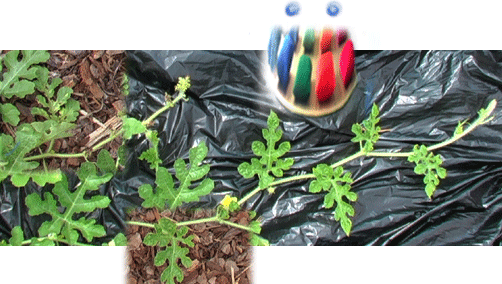Thursday
I began the MAed program with a few years experience teaching and lots of questions about how to improve the experience for me as well as the students. It seemed like there was a need for an integration of parts in the art education discipline. Crafts, graphics, design, women artists, Asian art, pottery are all art and yet they are treated seperately from fine art. I knew by experience as a student in a fine art institute that persuing a career was by definition making it big in New York. This seemed too narrow for the student's I needed to reach in the rural schools in North Carolina. The standard approach to art education wasn't meeting the needs of teachers or students to grow in the arts.
Fine art has a modern view of the world with a single standard of truth defined mostly by western cultures. A universal approach to art education is a post modern view which accepts plural cultural standards. A vision that is plural is inclusive and therefor more useful in reaching everyone in the classroom. As our classroom community becomes more diverse we need a vision of art that includes us all.
The academic papers linked on this page begin to look at alternatives to the fine art model in the curriculum. I tried to stay grounded with ideas that I thought would actually work in the classroom. Tried.
Staying true to the community of students that make up each class is essential. Knowing those students well, helping them to define their goals and offering opportunity for them to reflect on their progress is essential to real learning. Creating a class room community that reflects the diverse opportunities found in the art world helps students make the transition out of an institutional setting more successful.
July 10, 2004
Saturday
In the book "The Hundred Languages of Children" Loris Malaguzzi shares his motivation for starting work on the Emilia Reggio schools in Italy. "...WWII, or any war, in its tragic absurdidy might have been the kind of experience that pushes a person toward the job of educating, as a way to start anew and live and work for the future. This desire strikes a person, as the war finally ends and the symbols of life reappear with a violence equal to that of the time of destruction."
The money to start the schools came from the sale of a tank, two trucks and some horses abandonded by the German army six days after the end of the war.
July 08, 2004
Photo Gallery
The new photo gallery on the art ed-summer 04 page took all morning to figure out. Placing elements beside each other in css is not easy to do but I'm happy with the result. The still photos were taken with my digital video camera which means the quality is not good enough for print but works well as electronic media.
A revision is necessary here. The css layout worked for one day, now I've had to change the lay out of the photo gallery to tables ;-(.
June 15th, 2004
Intensive journaling
I began reading the Intensive Journal book and journaling. Obviously I did all my intensive journaling elsewhere ;-) I can say that I'm off to a good start and it is more than I hoped so far.
There is a huge need for ‚but lack of real teacher development offered in the public schools. Spring 04 Narrative Writing Tools outlines the need to be prepared with your own personal development plan as a public school teacher and offers information on the Intensive Journal method by Ira Progoff as a great tool.
Here is a great article on Ira Progoff, the journal method and its successes in job programs in New York. Kaiser, Robert Blair. (1981), Psychology Today, March. Retrieved April 21, 2004 from The way of the journal.
close art ed
